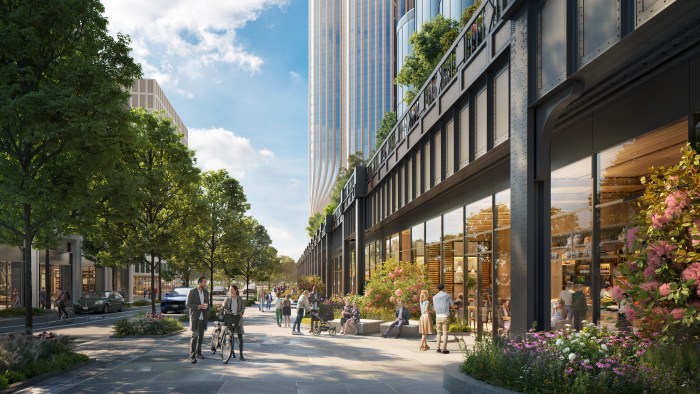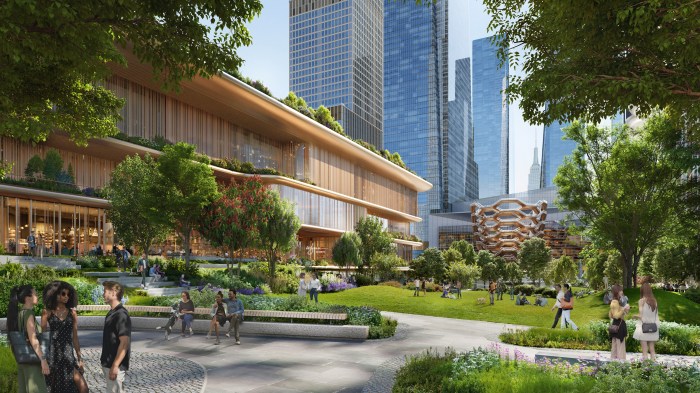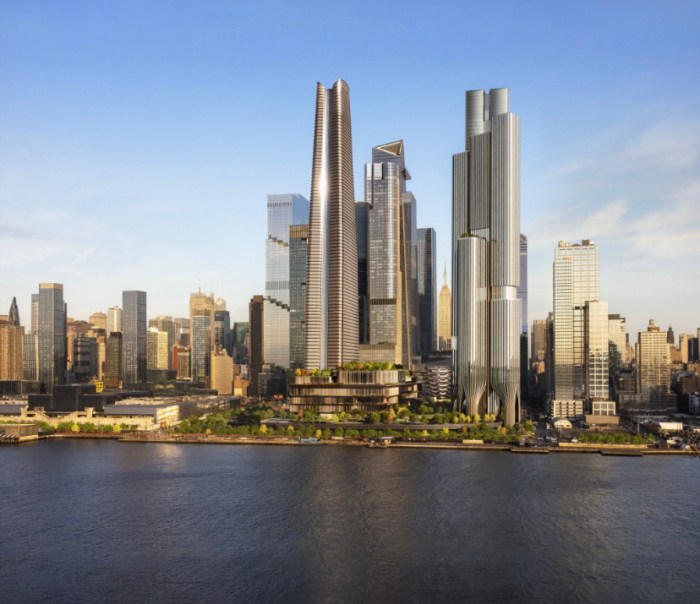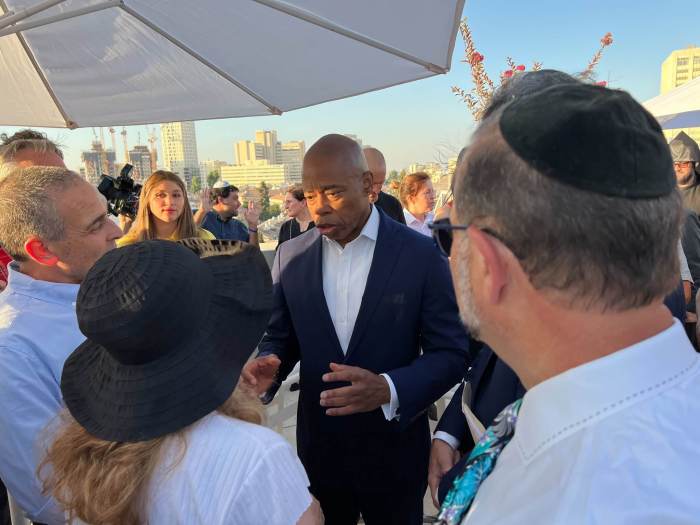225 Rector Place on a roll: The 24-story building at 225 Rector Place has bounced back after a few years that made headlines when its former developer, Yair Levy, converted it to condos from rentals and then dipped into its reserve fund for his own personal use. The Related Companies built the apartment house in 1985, sold it to Levy in 2005, and in 2010, repurchased it from Anglo Irish Bank, which had foreclosed on the property. By the time Levy was out of the picture (except for a court order that he repay the $7.4 million that he had nipped from the building’s reserve fund), Related had begun to revamp the building’s structure and soothe its beleaguered tenants. It hired the Irish designer Clodagh to redesign everything from the sun deck and cabana on the roof to the lobby, now handsomely decorated with huge mirrors and a dramatic floral display near the reception desk. She redid the hallways in subdued shades of brown and beige, redesigned the fitness center and skylighted swimming pool, designed a children’s play room and furnished a model apartment. Related was looking for a “Zen-like” feeling said sales director Sherry Tobak. After several years of jangled nerves in that building, Zen was no doubt welcome. Subsequently, Related also hired Jonathan Adler to decorate a few model apartments. He came up with a jazzy look that would probably appeal to prospective buyers who want some swagger in their living spaces. Now, of 225 Rector’s 286 apartments, 150 have sold and closed and 43 have sold but not yet closed. The apartments range in size from studios of around 550 square feet to three bedrooms of just under 2,000 square feet and in price from $500,000 to $2.5 million. Like the rest of Battery Park City, the building is in flood zone A and is just across West St. from several buildings that were darkened for more than a month by Superstorm Sandy. But, according to Tobak, this has not had an effect on sales. “I have not seen one single buyer who’s concerned since the storm,” she said. “We survived the storm without any problems. No water came up this block. We’re on a hill. We did not lose any deals. We did not lose any momentum. Everything has been moving as quickly now as it did before the storm.” She also said that banks weren’t balking at giving mortgages in the flood zone that includes Battery Park City.
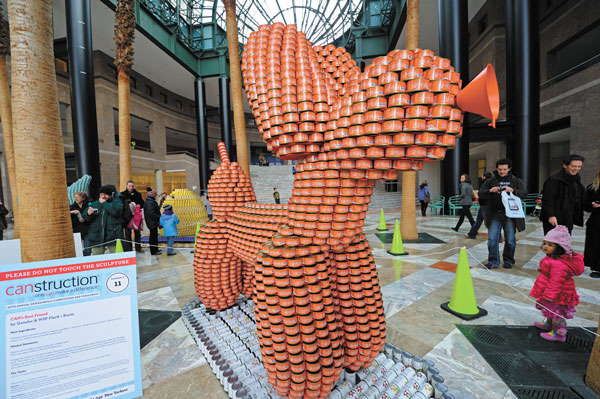
The annual CANstruction show at 2 World Financial Center is always intriguing and also helps a good cause. The canned food is donated to City Harvest after the show finishes. Downtown Express photos by Terese Loeb
Canstruction at 2 World Financial Center: Canstruction, that annual exhibit consisting of canned food stacked into wildly imaginative sculptures whose theme is hunger and how to allay it, usually comes to 2 World Financial Center just before Thanksgiving. After the show, the canned food is donated to City Harvest for distribution to New Yorkers in need. This year, Superstorm Sandy derailed that plan. Now, Canstruction is back through Feb. 11. As usual, some of the city’s top architecture and engineering firms have created amazing structures such as a top, a beehive, chess pieces, stairs that seem to have nothing to support them, a balloon dog and more — all made with stacked cans. The sculptures are always assembled during one night of frantic work — this year, on Jan. 31. They are judged by a panel of experts who look for such things as best use of labels, well-balanced meals and structural ingenuity. Founded in 1992, there are now Canstruction events in more than 100 cities worldwide. Participating firms donate staff time and either arrange for the food to be donated or pay for it themselves. This year, 25 firms entered the New York City competition. 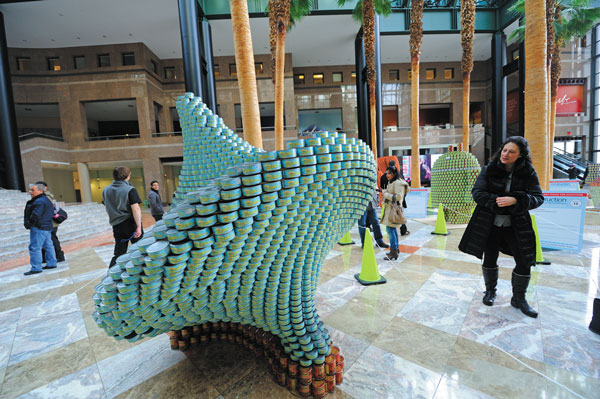 Admission to the show is free, but visitors are encouraged to contribute high-quality, non-perishable food to the collection effort. Tuna, beans and canned vegetables are welcome and can be dropped off in designated boxes throughout the World Financial Center. The show is open daily from 10 a.m. to 6 p.m. except on Feb. 11, when it will close at 5 p.m. For more information, go to www.worldfinancialcenter.com/canstruction. Valentine workshop: Anyone who has attended the Battery Park City Parks Conservancy’s valentine-making workshops in past years knows how engrossing they are. The Conservancy culls materials such as flowers and ferns from B.P.C.’s gardens and also supplies a wide assortment of papers, ribbons and fabrics such as velvet, satin and lace. The room hums with creative energy capped by evident satisfaction with the finished products. This year the free workshop will be on Feb. 9 from 10:30 a.m. to noon at 6 River Terrace. It’s recommended for ages 4 years old through adult. No reservations are necessary. Museum of Jewish Heritage and Ed Koch: New York’s late, beloved mayor, Ed Koch, had a special relationship with the Museum of Jewish Heritage in Battery Park City. As was noted in numerous news stories, Koch selected the last words of journalist Daniel Pearl for inscription on his tombstone: “My father is Jewish. My mother is Jewish. I am Jewish.” Muslim terrorists beheaded Pearl on Feb. 1, 2002. Koch died on that date 11 years later. On Feb. 1, Robert M. Morgenthau, chairman of the Museum of Jewish Heritage, and David G. Marwell, its director, issued a statement about Koch’s death. “This morning we mourn the loss of our dear friend and ‘Godfather,’ the Honorable Mayor Edward I. Koch,” it said. “Since his death was announced early this morning, the news coverage describing ‘New York’s Mayor’ has focused on his political life as a four-term congressman and three-term mayor. But his role in our Museum has made a significant impact on this city as well. Simply put, were it not for Ed Koch, we would not exist.” The statement explained that as mayor, Koch created a Holocaust task force whose work determined that a museum and a memorial should be built in New York City. In 1982, he established the New York City Holocaust Memorial Commission, which resulted in the creation of the Museum of Jewish Heritage. “The son of Polish-Jewish parents who came to this country in the late 19th century, he took great pride in his Jewish heritage and as a young infantryman in World War II, he encountered anti-Semitism on both a personal and global level,” the statement continued. “He felt a great sense of responsibility to the Jewish people and to Holocaust memory, and to ensure that the memories of survivors would not be forgotten, he envisioned our Museum of Jewish Heritage – A Living Memorial to the Holocaust. May his memory be a blessing.” To comment on Battery Park City Beat or to suggest article ideas, email TereseLoeb10@gmail.com. BY Terese Loeb Kreuzer
Admission to the show is free, but visitors are encouraged to contribute high-quality, non-perishable food to the collection effort. Tuna, beans and canned vegetables are welcome and can be dropped off in designated boxes throughout the World Financial Center. The show is open daily from 10 a.m. to 6 p.m. except on Feb. 11, when it will close at 5 p.m. For more information, go to www.worldfinancialcenter.com/canstruction. Valentine workshop: Anyone who has attended the Battery Park City Parks Conservancy’s valentine-making workshops in past years knows how engrossing they are. The Conservancy culls materials such as flowers and ferns from B.P.C.’s gardens and also supplies a wide assortment of papers, ribbons and fabrics such as velvet, satin and lace. The room hums with creative energy capped by evident satisfaction with the finished products. This year the free workshop will be on Feb. 9 from 10:30 a.m. to noon at 6 River Terrace. It’s recommended for ages 4 years old through adult. No reservations are necessary. Museum of Jewish Heritage and Ed Koch: New York’s late, beloved mayor, Ed Koch, had a special relationship with the Museum of Jewish Heritage in Battery Park City. As was noted in numerous news stories, Koch selected the last words of journalist Daniel Pearl for inscription on his tombstone: “My father is Jewish. My mother is Jewish. I am Jewish.” Muslim terrorists beheaded Pearl on Feb. 1, 2002. Koch died on that date 11 years later. On Feb. 1, Robert M. Morgenthau, chairman of the Museum of Jewish Heritage, and David G. Marwell, its director, issued a statement about Koch’s death. “This morning we mourn the loss of our dear friend and ‘Godfather,’ the Honorable Mayor Edward I. Koch,” it said. “Since his death was announced early this morning, the news coverage describing ‘New York’s Mayor’ has focused on his political life as a four-term congressman and three-term mayor. But his role in our Museum has made a significant impact on this city as well. Simply put, were it not for Ed Koch, we would not exist.” The statement explained that as mayor, Koch created a Holocaust task force whose work determined that a museum and a memorial should be built in New York City. In 1982, he established the New York City Holocaust Memorial Commission, which resulted in the creation of the Museum of Jewish Heritage. “The son of Polish-Jewish parents who came to this country in the late 19th century, he took great pride in his Jewish heritage and as a young infantryman in World War II, he encountered anti-Semitism on both a personal and global level,” the statement continued. “He felt a great sense of responsibility to the Jewish people and to Holocaust memory, and to ensure that the memories of survivors would not be forgotten, he envisioned our Museum of Jewish Heritage – A Living Memorial to the Holocaust. May his memory be a blessing.” To comment on Battery Park City Beat or to suggest article ideas, email TereseLoeb10@gmail.com. BY Terese Loeb Kreuzer



